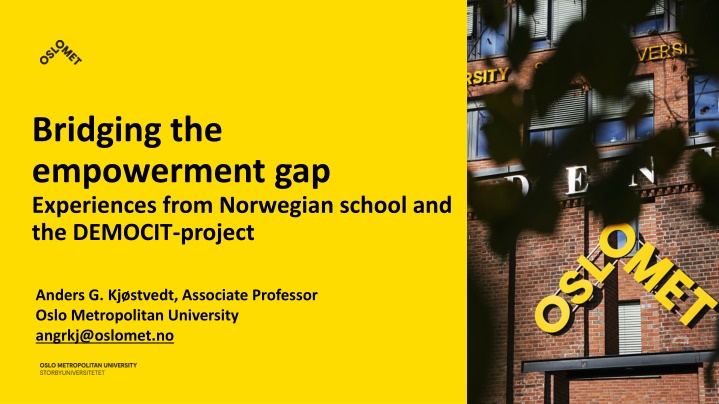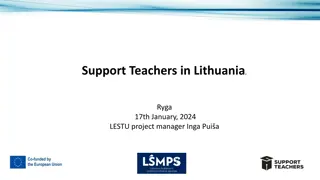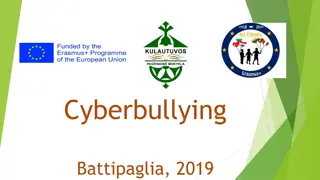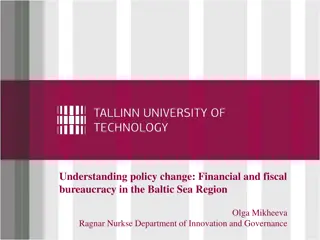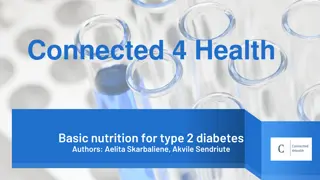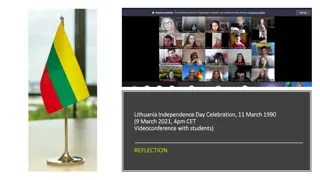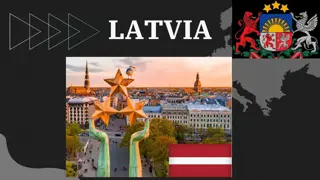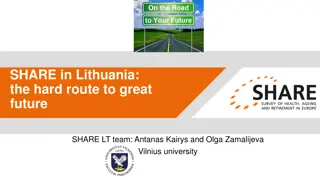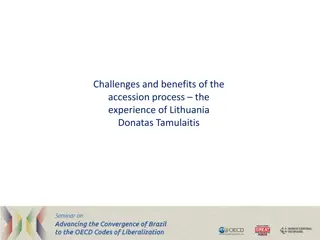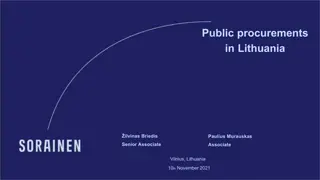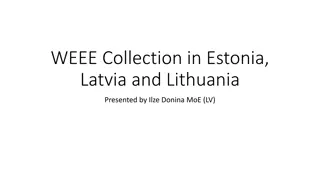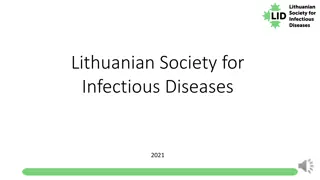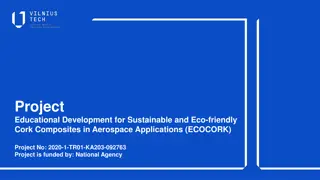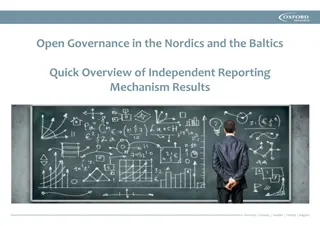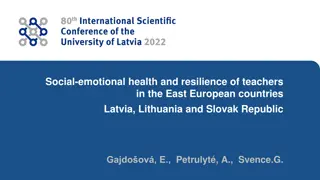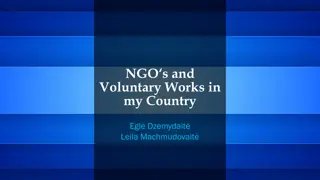Promoting Citizenship Education in Norwegian Schools
Exploring the experiences and challenges of citizenship education in Norwegian schools, this content highlights the historical context, basic principles, strengths, and challenges of educating children and youth for democratic participation. Despite high levels of civic knowledge, there are gaps in preparing students for active engagement in society, pointing to the need for continued efforts in fostering a more inclusive and participatory educational environment.
Download Presentation

Please find below an Image/Link to download the presentation.
The content on the website is provided AS IS for your information and personal use only. It may not be sold, licensed, or shared on other websites without obtaining consent from the author.If you encounter any issues during the download, it is possible that the publisher has removed the file from their server.
You are allowed to download the files provided on this website for personal or commercial use, subject to the condition that they are used lawfully. All files are the property of their respective owners.
The content on the website is provided AS IS for your information and personal use only. It may not be sold, licensed, or shared on other websites without obtaining consent from the author.
E N D
Presentation Transcript
Bridging the empowerment gap Experiences from Norwegian school and the DEMOCIT-project Anders G. Kj stvedt, Associate Professor Oslo Metropolitan University angrkj@oslomet.no
Citizenship education in Norway DEMOCIT-project Questions worth considering?
Citizenship education in Norwegian schools Norway s liberation movements from Denmark (1814) and Sweden (1905) were both strongly linked to democratic principles, so in the Norwegian historical context the struggle for national liberty ran parallell to the struggle for political liberty This was repeated in 1945, when Norway was liberated from totalitarian Nazism both in a national and a democratic sense Educating children and youth for political participation can be traced back to the 1860s Preparing youth for democratic participation through a compulsory school is a 150-year long tradition in Norway and is regarded as self-evident
Citizenship education in Norwegian schools Three basic principles for citizenship education in Norway * civic learning (knowledge and competences for democracy) * open classroom climate (open debate, argumentation, respect opinions) * civic participation in school (student council, mock elections Education about / for / through democracy school as a democratic arena Current curricular reform (introduced gradually from 2020): Democracy and Citizenship is introduced as one of three cross-curricular themes that are supposed to influence all school subjects (not just Social Studies) but how this is to be implemented the reform say very little about
Citizenship education in Norwegian schools Strenghts - high levels of civic knowledge, citizenship efficacy and voting intentions (similar to other Nordic countries) Challenges - the school can never become a truly democratic arena - the gap between participation in the classroom and in society / public life is too wide, making the learning de-politicized - children and youths learn too much about institutionalized democracy (voting), and not enough about other forms of political participation - there is a participation gap based on gender, socio-economic status and immigrant background
The higher SES strata, the higher civic knowledge achievement (ICCS) 650 635 634 633 630 613 608 607 610 602 599 595 594 593 590 585 583 578 576 570 568 566 570 562 555 554 550 548 550 545 538 530 530 523 523 522 520 510 494 490 490 470 2009 2016 2009 2016 2009 2016 2009 2016 Denmark^ Finland Norway* Sweden* Lowest SES quantile Middle lower SES quantile Middle upper SES quantile Highest SES quantile
The higher SES strata, the higher citizenship self-efficacy (ICCS) 56 54 54 53 53 53 53 53 52 52 51 51 51 50 50 50 50 50 50 49 49 49 49 48 48 48 48 48 48 47 47 47 47 46 46 46 45 44 44 42 40 2009 2016 2009 2016 2009^ 2016 2009^^ 2016^ Denmark^* Finland* Norway^^* Sweden^* Lowest SES quantile Middle lower SES quantile Middle upper SES quantile Highest SES quantile
Democracy, Equality, Learning and Mobilisation for Future Citizens (DEMOCIT) (https://www.oslomet.no/en/research/research-projects/democit)
DEMOCIT In the DEMOCIT-project we ask: How can school improve Norwegian youths belief in their own participation in democratic society (political efficacy)? From the International Civic and Citizenship Education Study (2009 & 2016) we know that young citizens belief in their future participation in democracy is influenced by gender, ethnicity and socioeconomic background. How can we bridge this gap? We focus on qualitative research and by placing the youths and their perspectives and experiences in the center DEMOCIT is a cross-curricular research project combining Teacher Education and Youth Research. We also have important participation from the NGOs European Wergeland Centre and Save the Children
DEMOCIT We ask: - How does youths conceptualize democracy and political participation? What do they consider political? What questions and issues interest and engages them? - What does the youths themselves believe increases or decreases their belief in their own participation? What fosters active citizenship, what obstructs it? - What are students' everyday experiences of influence and co-determination? - How can school improve on the combination of youths everyday-life experiences of participation and what they learn about participation in the classroom?
DEMOCIT We will try to answer this by: - collecting new and utilizing existing data from longitudinal surveys on youths everyday-life experiences - observing classroom practices in Social Studies-classes in Year 9 - interviewing students from Year 9 on their experience of and reflections on citizenship education in the classroom and their everyday-life experiences of participation - interviewing principals and teachers about their experiences of and reflections on citizenship education Our main idea: it is not the knowledge of democratic institutions (parliament, political parties etc.) that decide whether youths believe they will participate in democratic society, it is their belief that they can make a difference and that their opinion is important (political efficacy)
Questions worth considering? For what kind of democracy are we educating? Or: What IS a democracy? Is it the institutions (parliament, political parties) and elections? Or is it an on-going public debate, in which everyone can take part? (institutional vs. deliberative democracy). Is the goal of citizenship education to produce voters or citizens that will engage with their community? What is political? In general, youths regard themselves as un-political. But they may be very interested in social issues that are important to them they just do not realize that these issues are political. How do we discover the issues that are important for youth in different settings (urban/rural, male/female, majority/minority, religious/non-religious)?
Questions worth considering? What is political or democratic participation? Youths participation in traditional politics (voting, party membership, trade unions) is declining. Is this a problem, or are new forms of participation emerging (social media, climate activism, Fridays For Future)? How do we bring youths everyday-life experiences into education? Youths have experiences of participation and non-participation in their everyday-lives. How do we utilize them in an educational setting? How do we help youths make sense of these everyday-life experiences in a civic / social perspective?
Questions worth considering? Do we take part in democracy as individuals or as members of a collective? Citizenship education in the Nordic countries is very focused on the individual. In the curricula, the pupil is an individual and very rarely part of a collective (class, nation, religion etc.). How does this change education for active citizenship? Does it make it easier or more difficult to bridge the empowerment gap? How should new forms of participation (social media) influence education? From research we know that the participation gap is wider when we consider new forms of participation, and this has to do with the fact that we do this as individuals (as our economic and cultural backgrund becomes more important).
